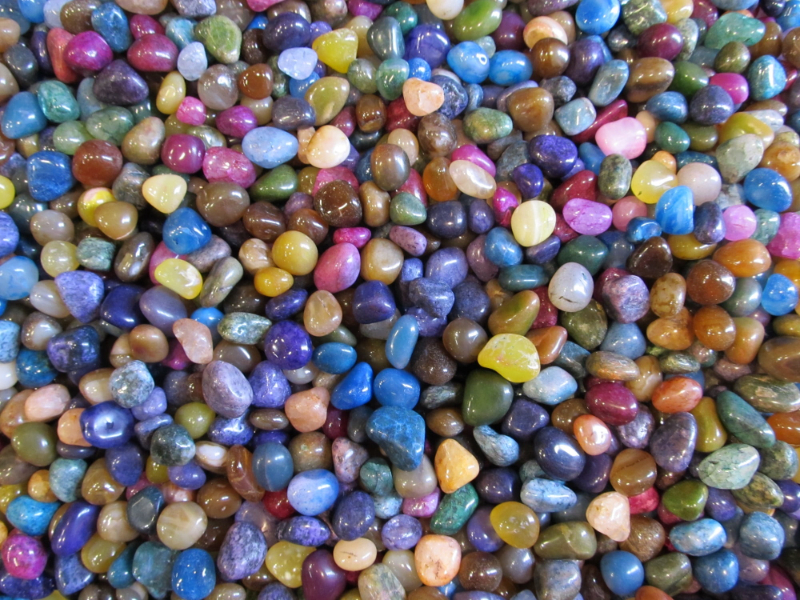You may have heard of rock-tumbling. It’s an enjoyable hobby.
When you rock tumble, your very own unique gemstone is created. You can form them into an amethyst , moonstone or other types of rocks that are found in nature. You can have your creativity while enjoying the outdoors by rock tumbling if you are careful and patient. If you get good enough – you might make this into a side hustle.
Rock tumblers are people who use various tools and enjoy grinding down rocks and minerals until they attain the desired size. In ancient Greece, rock tumbling was used to bring the beauty of nature indoors. Rock tumbling today is a fun way to make jewelry unique or something small that you can enjoy at home.

What is Rock Tumbling and How Does It Work?
Rock tumbling, also known as rock polishing, is a technique that shapes rock and minerals into smaller pieces. Rock tumblers, which are basically rock polishers for workshops, are used to perform rock-tumbling. These stones can fly through the air or under water, and rock tumbling gives you the feeling of working with Mother Nature.
The basics of rock polishing
Rock tumblers made from strong, durable materials are built to withstand frequent use with pets and children. A rock tumbler has three components: a barrel; a raking apparatus; and an outer housing. The inside of the rock tumbler barrel is where rock polishing takes places. The rock tumbler-raking device is a rotating device which moves the mineral or rock around in the barrel. Rock tumblers have an outer housing with windows to allow you to watch the transformation of your rock over time.
Rock tumbling benefits
Rock tumbling has many benefits for children. This gives kids the opportunity to show their creativity and ingenuity, to create new things. They would be able to learn more about rocks and minerals as well how they are made. It is possible that a rock once thought to be a stone might no longer look like one after rock tumble. While rock tumbling, children can also learn more about the natural sciences.
Older adults may also find rock tumbling beneficial. Adults have the chance to enjoy rock tumbling in their own time and pace. It allows adults to experience all of the different features of the tumblers without the need to purchase one.
Other benefits include rock polishing (sharpening), rock cleaning, rock desulphurizing, rocks sharpening (so it can also be used as a paint or plastic additive) and rock-degreasing. Find out more information about these and other benefits of the lapidary arts. There are many different kinds of rock tumblers for rock tumbling. If they are unsure which rock tumbler is best for them, they can test out various rock tumblers until they find one that works for them.

How rock tumblers do it
If rock tumblers wish to rock the tumbling process as an artist form, they may use rock tumbling kits in their spare time or as a hobby. The first step in rock tumbler’s journey is to identify the rock they want to rock tumble. They should also decide on the type of rock tumbler to use.
To determine if rock is organic or not, rock tumblers need to know. There are many types of rocks that might need a different method for rock tumble. It would be an art form if rock tumblers used a rock tumbler to rock tumble organic material.
Rock tumblers may also identify the features of the rock in order to determine its type. A good indicator that their rock is sedimentary is if there are layers in the stone or different colors.
Rock tumbling involves a variety of rock-grinding techniques that make rock look sharper, brighter or more symmetrical. This hobby is fun and suitable for people who are interested in geology and the outdoors. Rock tumbling, regardless of whether you enjoy rock hunting in nature or have lots of rocks collections, is a great method to get your rocks in shape.
Here are some tips for rock tumblers
Here are some tips to help you rock tumblers get going!
– Locate natural rock formations in your region. Mother Nature is the best source for information. It’s important to be careful while rock hunting, so you don’t endanger anything. Take small pieces only when you find what it is you are looking for so that nature’s rock-tumbling doesn’t stop.
If rock hunting isn’t your thing, there will be plenty of rock shops around your area that will sell rock specimens so you can practice your rock tumbler skills. You only need a very small quantity per batch.
– Before you begin rock tumbling, wash the rocks and sort them into different categories. This will make rock tumble more efficient and protect you from losing all your hard work.
Once rock tumbling starts, you should always keep it under control. You need to be attentive to rock tumblers for any grinding or polishing. If you don’t tend to your rock often enough, it could overheat, resulting in a rock shard. This is rock tumbling’s version of the bogeyman.
– Rock tumbling is a continuous activity, so don’t let your rocks shards go to waste. To make sure they don’t go to waste, you can put them into rock collections and/or start a rock tumbling adventure with them.
People who love geology and the outdoors will enjoy rock tumbling as a hobby. Rock tumbling simply means that rocks and minerals are ground down to make them smaller, more pliable. These stones have been transformed over billions years by natural forces, such as gravity, water, wind, gravity, or volcanoes. To participate in rock tumbling, you can collect stones from nature and use different techniques to make something truly unique.